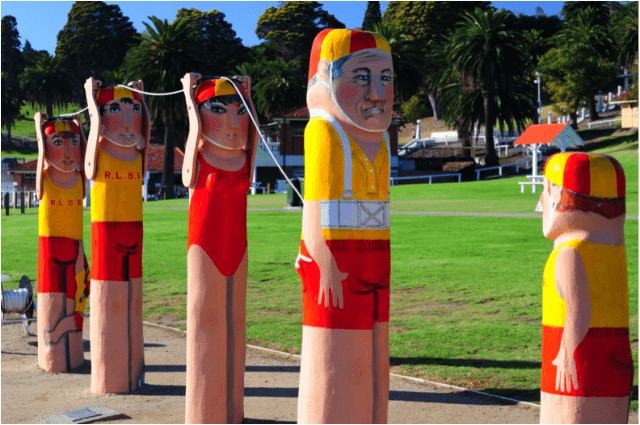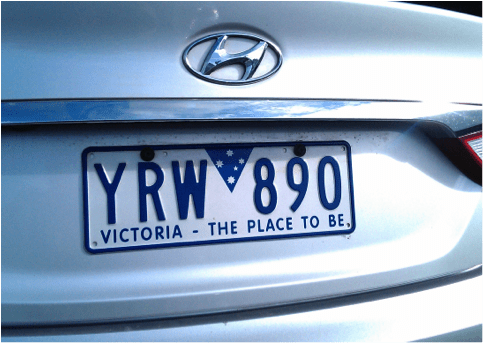[Ed: Cian is a friend and recent graduate from EM training in Ireland and below are his reflections on his current gig in Geelong, Australia.]
This is my first attempt at writing a blog post. To borrow advice from Mark Twain, I’m going to write what I know and what I do everyday at work, so hopefully you will find it interesting.
I currently work as a Consultant Emergency Physician in Geelong Hospital in Victoria, Australia about 70km south of Melbourne*. I completed Emergency Medicine advanced training in Ireland in 2012 under the auspices of the College of Emergency Medicine in London. I relocated to Australia with my partner, Shirley, 12 months ago to experience a new healthcare system and the Australian lifestyle.
Geelong Hospital Emergency Department serves a catchment area of approximately 500,000 people throughout Victoria’s surf coast and regional Victoria. There are 64,500 new ED attendances each year consisting of undifferentiated pathologies of all acuities, including 20% paediatric cases. Outside Melbourne, Geelong is the fastest growing region in Victoria.

Emergency Department, Geelong Hospital
* Since the time of writing this post in June 2014, the author has moved to work in Ireland
Key initiatives in our ED
While EDs across the British Isles are experiencing a severe workforce recruitment and retention crisis, the Australian staffing levels are the aspiration of the rest of the world. Working alongside me in Geelong, there are 14 full time equivalent EM consultants, 17 registrars, 12 residents/ interns, and 60 nurses in addition to physiotherapists, emergency nurse practitioners and administrative staff. Junior medical staff members are a mix of international medical graduates (many of them from Ireland and the UK) and Australian trainees.
Each weekday morning, 2 or 3 consultants are rostered to be present on the ED shop floor. The supervising consultant begins a ward round of all patients in the ED with the overnight staff. At 9am, another clinical consultant arrives to manage the short stay unit, all resus room cases for the day and the fast track area for minor injuries or illnesses. In addition to this each day, 3-4 registrars begin staggered shifts at 11am, 2.30pm and 4pm. There is a ward round at 4pm to handover all ED patients to the evening consultant who works until midnight and is on-call overnight.
Next Saturday evening, when I’m in charge, I will work alongside twoconsultants and five registrars until midnight. This makes the overall workload more manageable and less stressful since I can delegate registrars and consultants to manage sickest patients. The presence of several senior medical staff allows timely patient flow in the ED, direct supervision of cases and procedures for residents, registrars and interns and is necessary in a large, modern Australian ED.
Geelong ED also supports an eight-bedded short stay, Clinical Decision Unit. Stable patients are admitted to CDMU for observation, investigation and risk stratification of several common ED presentations. There are 2 consultant ward rounds each day and a supervised flow of patients from the main ED to this ward.
A prehospital patient notification system is in place to let us know in advance of all potentially serious cases arriving to the ED via ambulance. All local GP clinics telephone directly to the ED supervising consultant to notify us of patients that they are sending to the ED for further treatment and assessment. This way, it is possible to plan, prepare and allocate resources to these patients. Such initiatives are part of the reason that our department runs well on a day-to-day basis.
Fortunately, there is a strong emphasis on a ‘bias towards yes’ culture in our hospital fostering collegial and collaborative interactions between staff at all levels. People usually respond in a positive manner to ED requests and this helps achieve a common goal of safe, efficient and high-quality patient care.

‘Working together’ – Baywalk bollards by local artist Jan Mitchell depicting surf lifeguards in Geelong

Eastern Beach Reserve Geelong Waterfront

‘The Place to Be’ – Victorian car registration plate
My shift in ED
Clinical shifts in our Emergency Department are dynamic, fast-paced and challenging. We are required to make many decisions about our patients in collaboration with inpatient specialist teams and the other hospital departments.
We manage on average 190 patients each day in Geelong ED with a seasonal variance, as Geelong is a popular tourist destination. The following cases are a selection of the patients I was involved with on a weekday shift recently. To put things in perspective, over this particular 24-hour period, there were 210 new ED attendances of which 73 were admitted (35%) and 137 reviewed, treated and discharged (65%). There were 3 trauma team calls, 3 stroke team calls and 1 code STEMI. There were 53 paediatric attendances. Our flight retrieval doctor was dispatched to regional Victoria to repatriate a critically unwell man to Melbourne.
First up in resus, my shift started with a young child with a small wound on his lip after a fall at home earlier that morning. Using intramuscular ketamine for procedural sedation the wound was closed nicely. He was recovered first in resus and then in the CDMU before Mom and Dad took him home in the afternoon. It was satisfying to manage this child safely in ED and avoid a hospital stay.
Our next case was a prehospital notification call from the Ambulance Victoria (AV) paramedics. An elderly lady had been involved in an MVA on the nearby Princes highway and had rolled over in her car. Our ED trauma team was quickly activated (trauma surgeon, anaesthetist and radiology department, operating theatre on standby) for this case. Following a normal bedside EFAST ultrasound, and CT imaging of her brain and cervical spine this patient was admitted to the trauma service for observation and a tertiary survey.
Another prehospital resus notification followed shortly afterwards. This time AV flight paramedics delivered us a patient with ongoing chest pain from a small peripheral medical centre. His initial ECG had been faxed to the ED and showed anterolateral ST elevation. A ‘code STEMI’ was activated and the cardiology team rushed him to the cath lab for emergency PCI reperfusion.
The Australian footy season is in full swing right now and shoulder dislocations are a common presentation and are considered bread and butter for most emergency physicians. The Cunningham technique is a no sedation approach to shoulder reduction. Using nothing more than kind words, gentle massage and positioning techniques, our next patient’s anterior shoulder injury was corrected and he was discharged in 45mins to follow up with the hospital orthopaedic service.
Next up, a young boy was brought to resus for ongoing respiratory distress and stridor. He had a choking episode the previous day while eating a chunk of apple at kindergarten. Mum was concerned when she noticed a high-pitched squeaking sound from her child, as were we! Reduced unilateral breath sounds and differential lung volumes on an expiratory chest x-ray clinched a diagnosis of inhaled foreign body in this child. Later that evening, the ENT team performed a rigid bronchoscopy to retrieve a piece of apple from the child’s left main bronchus.
After lunch, an elderly lady was wheeled in to the resus room. She had fallen in the bathroom overnight with a headstrike against the ceramic bath edge and a hyperextension injury of the cervical spine. In addition to a skull fracture and a C6 spinous process fracture she had bilateral upper limb weakness, parasthesiae and brisk upper limb reflexes. MRI confirmed a central cord syndrome and this lady was transferred to a neurosurgical unit in Melbourne for cord decompression.
Registrars in our department are well supervised especially for patient procedures. Considering the case of a lady with a proximal hip fracture, we talked about the benefits of a fascia iliaca compartment block for pain relief. I supervised one of our EM registrars, using an ultrasound-assisted technique, we successfully infiltrated the nerve compartment leaving this patient very comfortable while waiting for surgery later that evening.
Before finishing my day shift, an 18 month-old child was rushed into the resus room by concerned senior nursing staff at triage. She had been unwell for 2 days previously and now had severe respiratory distress with an increased work of breathing. Having initially stabilised using a high-flow humidified oxygen circuit in the ED, this child failed to improve further and was admitted to ICU for bronchiolitis and for ongoing airway support. So my day ended as it had begun with a sick child in our resuscitation room with a good outcome.
Every day at work in Geelong is exciting and stimulating. I’m surrounded by fantastic colleagues that I learn new skills from and hopefully impart some information in return. Australia has been a superb life experience thus far. I have found new enthusiasm to improve my clinical skills and re-discovered an appetite for knowledge.
At the end of my ED shift, I’m thoroughly tired but always happy.

‘Going places’ – Geelong V-Line train station
